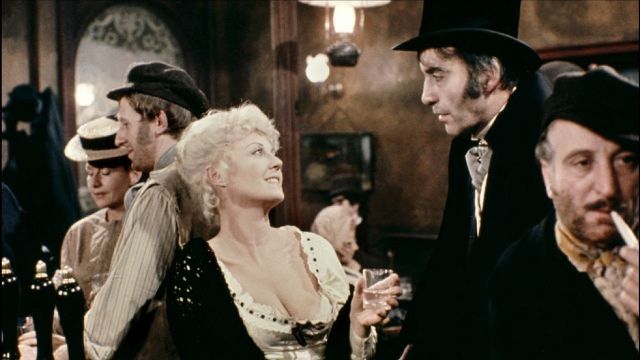I, Monster (1971) 

Director: Stephen Weeks
Cast: Christopher Lee, Peter Cushing, Mike Raven
Synopsis: Christopher Lee stars in the Amicus production of “Dr. Jekyll & Mr. Hyde” where the names have been changed to Dr. Marlowe and Mr. Blake.
Robert Louis Stevenson’s novella The Strange Case of Dr Jekyll and Mr Hyde was dusted off yet again back in 1971, just a month after the Hammer Studios had returned it to the library upon completing Dr Jekyll and Sister Hyde. This time, it was Amicus rifling through the pages for inspiration but, perhaps conscious of the fact that the title had already been filmed 27 times, writer Milton Subotsky changed the Jekyll and Hyde to Marlowe and Blake and chose, in I, Monster a more dramatic title, while remaining true to the essential plot of Stevenson’s work. How did we ever see through that little ruse?
Christopher Lee (To the Devil a Daughter, The Lord of the Rings: The Two Towers) plays Doctor Marlowe, a psychologist heavily influenced by the Sigmund Freud’s psychoanalytical theories relating to the id, ego and super-ego (which necessitated another minor change — putting back the time in which the story is based back by a couple of decades), who has begun experimenting on some of his patients by administering drugs intravenously in order to release their inhibitions. So a repressed young woman makes herself naked in his office, while a forthright businessman becomes a whimpering baby. But Marlowe wants to find out if the drug he has created has the same effect every time it’s taken, or whether different aspects of a person’s character are revealed. As he can’t repeatedly experiment on his patients, Marlowe decides to experiment on himself, with predictable results.
The transformations in I, Monster largely take place off-screen, and initially Marlowe doesn’t look much different in the guise of Mr. Blake than he does as his usual self — apart, that is, from sporting a perpetual silly grin and something of a swagger. In fact he seems like more of a gleeful child than an inhuman brute as he smilingly surveys the beakers and retorts in Marlowe’s laboratory. But as Marlowe continues to inject himself, his Blake persona becomes increasingly ugly, developing a Neanderthal brow and a lumpy, mottled nose. Presumably this is the slow process of Marlowe’s dark side overcoming his good, although we get little insight into this because I, Monster focuses more on the efforts of his friends to extricate him from the grasp of the blackmailer for whom they have mistaken Blake than it does on Blake’s murderous exploits. These friends are led by Frederick Utterson, played by Peter Cushing (The Abominable Snowman, Star Wars) whose cheek bones look sharp enough to cut cheese. This decision to concentrate on Utterson’s rescue attempts also means there’s a distinctly lack of horror in I, Monster — almost one murder is shown, and that is in near-darkness. Moray Grant’s camera is even squeamish about showing us Marlowe pushing a needle into his arm, panning away to his shadow on the wall as he injects himself.
You’ll notice that there’s a lot of panning going on in I, Monster. Not because it’s a pan-and-scan cut of a widescreen version, or because of any artistic endeavours on the part of 22-year-old director Stephen Weeks, but because it was originally intended as a 3D movie using a technique called the Pulfrich effect which calls upon features in the foreground to move to the right while those in the background move left. This is why the camera so often creeps around in a 180 degree arc during the course of many scenes. Watched in standard format, this technique, while not a distraction, is certainly noticeable — especially during one scene set in an East End pub during which all the patrons gently shuffle to the right as they mumble ‘rhubarb’ to one another. Sadly, the same can’t be said of the editing, which is noticeably abrupt at times, with some conversations appearing to end in mid-stream.
Having said that, I, Monster is actually a reasonably absorbing version of Stevenson’s tale, creating an almost pungent atmosphere of Edwardian poverty thanks to some low-key lighting an remarkably good sets to which it’s clear plenty of attention has been paid by Weeks and his crew.
(Reviewed 8th April 2014)
httpv://www.youtube.com/watch?v=mBWCG1ZWtEI
